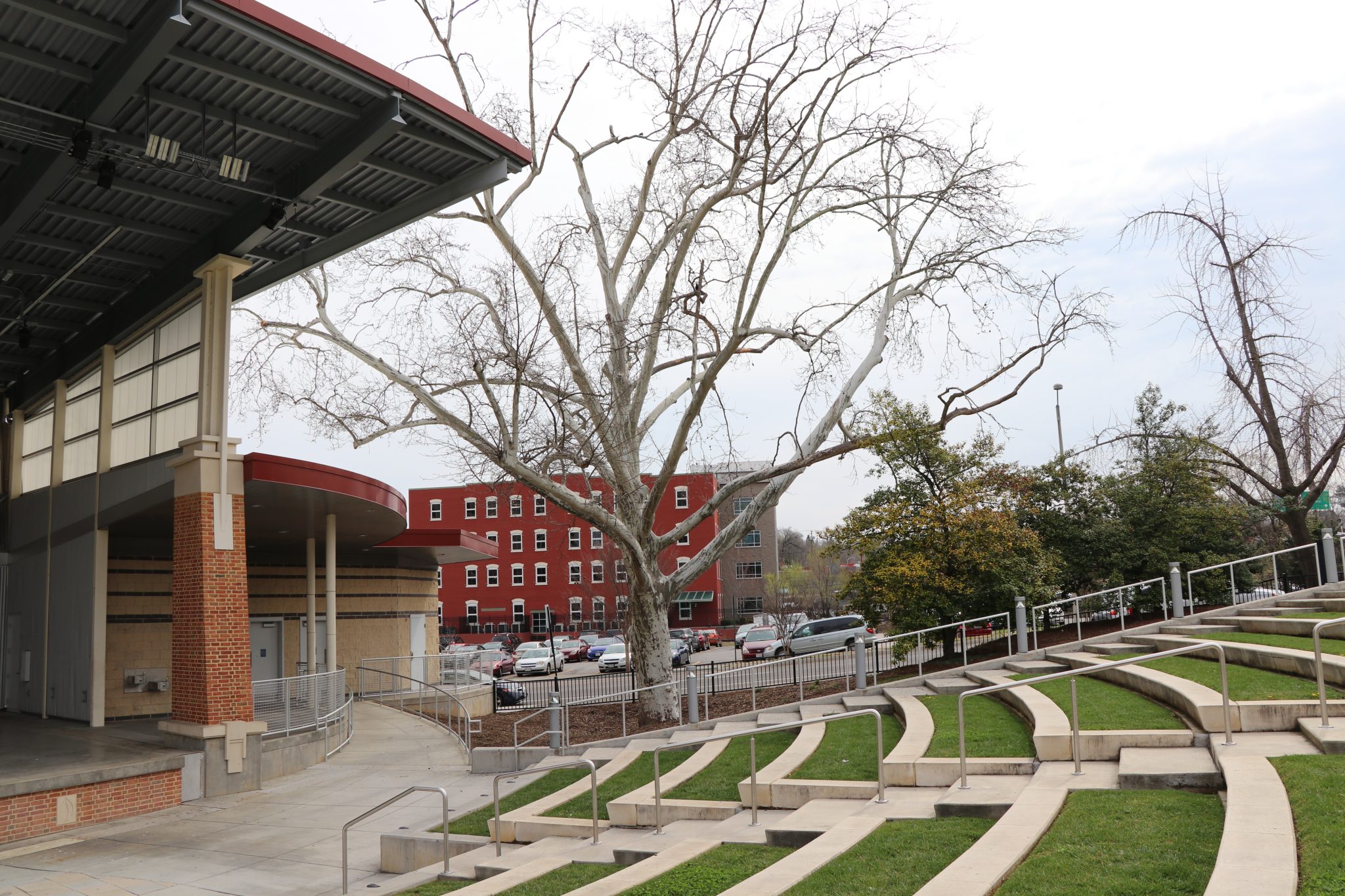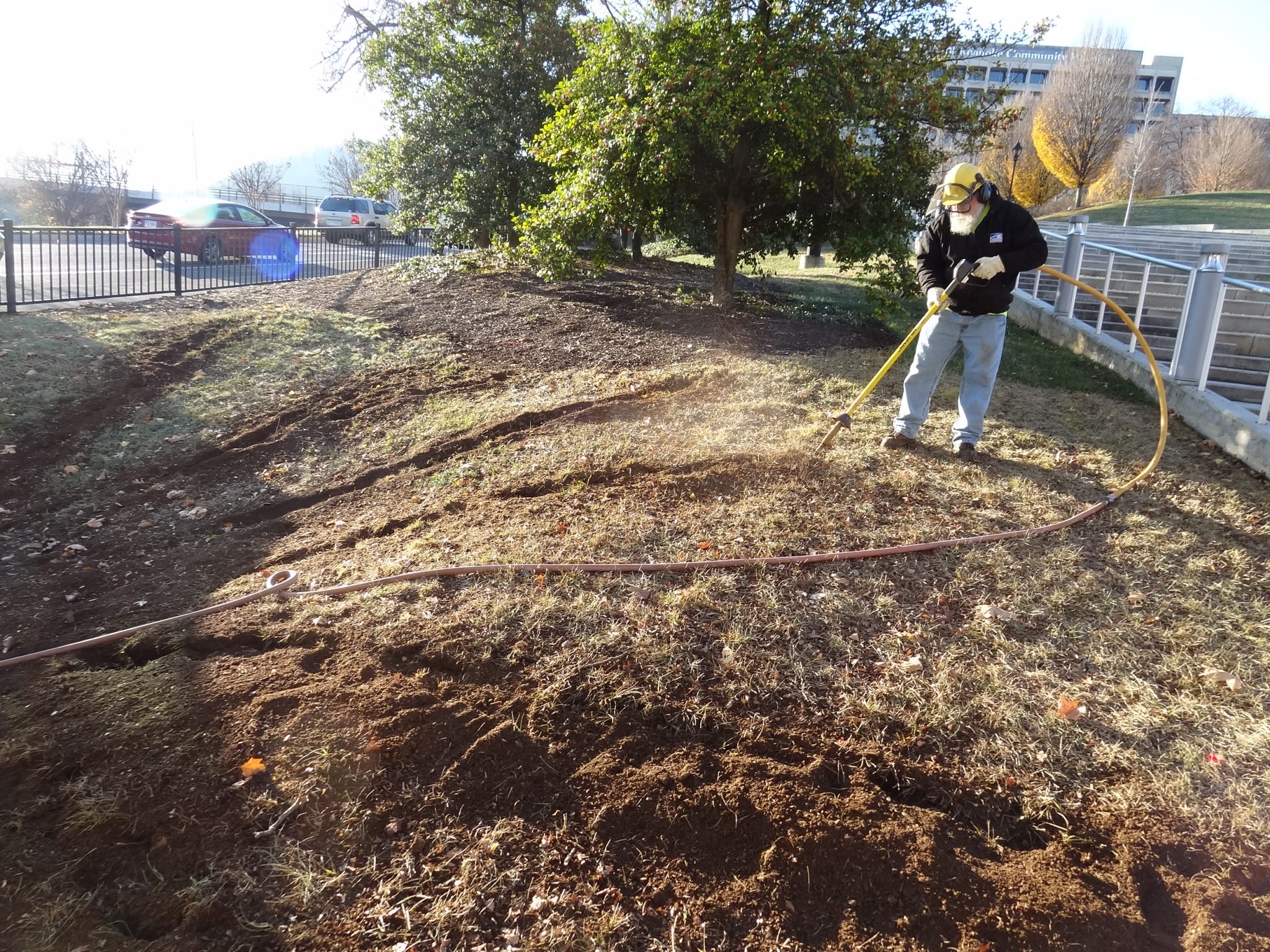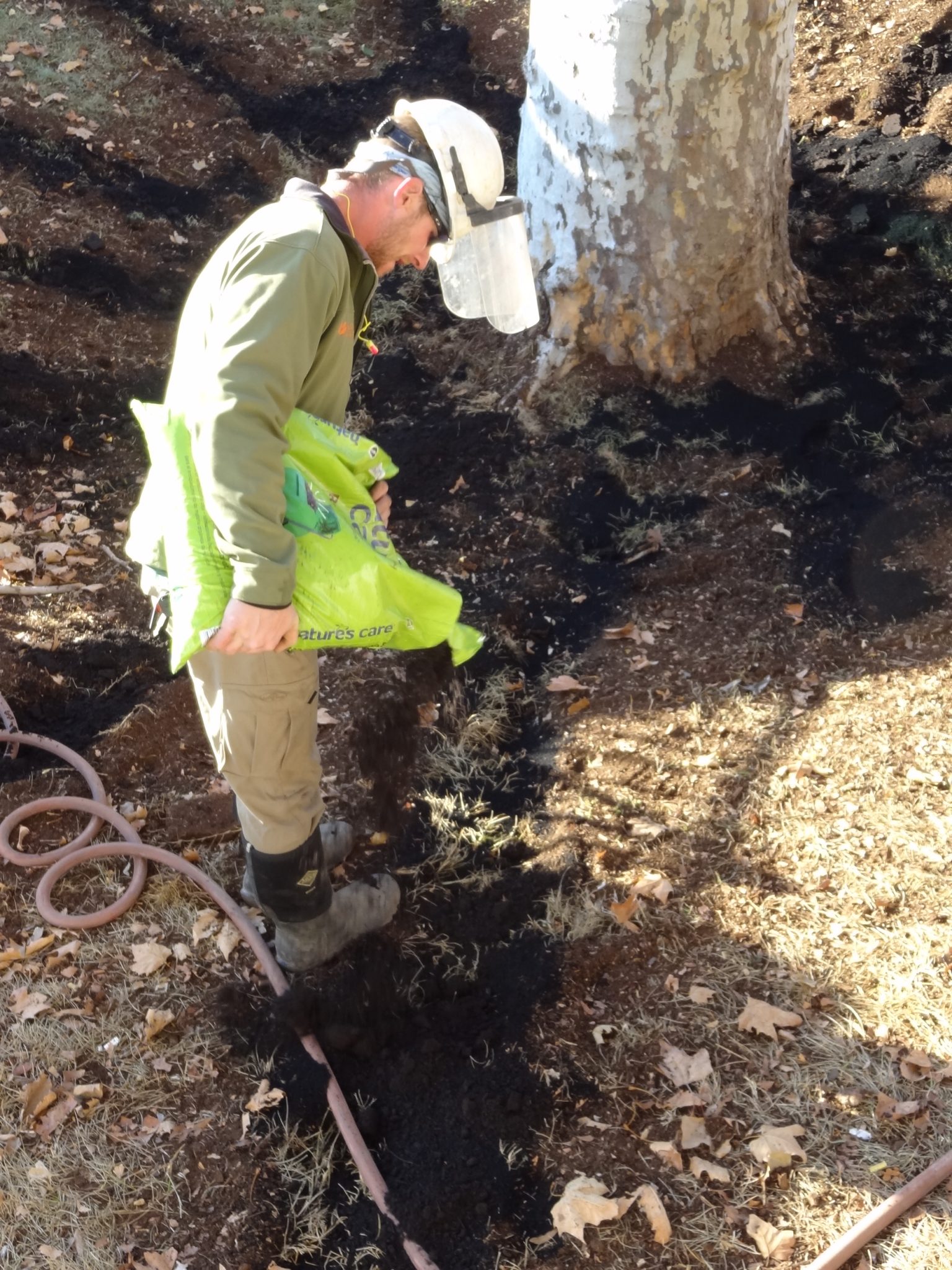 If one were to make a list of Roanoke’s best attributes, its beautiful trees are sure to be on there. They give us shade in our parks and provide a rural setting in an urban environment. When renovation work began in Elmwood Park in 2012, it only made sense that the large American Sycamore to the right of the amphitheater be retained for its aesthetic value. Although they recognized the tree was a significant element of the park, a large portion of the tree’s root system had to be removed in order to build the amphitheater and stadium seating. Since then, the tree’s health has slowly declined, and last year Roanoke Urban Forestry was alarmed to find that the tree was struggling severely. Bill West, Roanoke’s Urban Forester, has a great interest in veteran tree management, the conservation of mature trees, and challenged Jamie King, Roanoke’s Tree Inspector, to put together a team of experts to preserve the tree. Ultimately, five different groups (Bartlett Tree Experts, Downtown Roanoke, Inc., Manning Arboriculture, Roanoke Tree Stewards, and Roanoke Landscape Maintenance) joined Roanoke Urban Forestry to attempt to preserve this valuable asset.
If one were to make a list of Roanoke’s best attributes, its beautiful trees are sure to be on there. They give us shade in our parks and provide a rural setting in an urban environment. When renovation work began in Elmwood Park in 2012, it only made sense that the large American Sycamore to the right of the amphitheater be retained for its aesthetic value. Although they recognized the tree was a significant element of the park, a large portion of the tree’s root system had to be removed in order to build the amphitheater and stadium seating. Since then, the tree’s health has slowly declined, and last year Roanoke Urban Forestry was alarmed to find that the tree was struggling severely. Bill West, Roanoke’s Urban Forester, has a great interest in veteran tree management, the conservation of mature trees, and challenged Jamie King, Roanoke’s Tree Inspector, to put together a team of experts to preserve the tree. Ultimately, five different groups (Bartlett Tree Experts, Downtown Roanoke, Inc., Manning Arboriculture, Roanoke Tree Stewards, and Roanoke Landscape Maintenance) joined Roanoke Urban Forestry to attempt to preserve this valuable asset.
Strategy

They started with the soil. There wasn’t room to give the tree more, but they could try to improve the soil in the root zone. Adam Braaten of Bartlett Tree Experts offered to test the soil, and the Roanoke Tree Stewards helped take samples. The results were shocking—the soil was chemically ideal. The problem—it was compacted and grass was growing over much of the root zone, causing the tree to compete for nutrients. The park’s caretaker, Bobby Platz, agreed to remove the turf and mulch within the dripline, but they thought they could do more. Arborists have been researching bio-char, an ancient soil amendment similar to charcoal that increases soil’s ability to retain moisture and nutrients. Geoff Manning of Manning Arboriculture suggested amending the remaining root zone with the bio-char and some compost. The team incorporated the amendment into the soil this past fall with an air-spade, a pneumatic tool for soil excavation, around the trunk of the tree. This decompacted the soil and added excellent moisture retention to the remaining root zone without disturbing every tree root.
Funding
With the Tree Stewards, the team performed an iTree ECO analysis to quantify the tree’s value to the park and the urban canopy as a whole. This software allows arborists to show the annual benefits that trees provide in dollar amounts. This report gave the team data to approach several garden clubs and other groups who often support urban forestry projects, but nobody had funding. However, at a community meeting, Tina Workman, Director of Downtown Roanoke Inc., offered to pay for the bio-char needed to preserve the tree.
Finale
 This past December, everything came together. Manning was able to order the bio-char in bulk, saving the project even more money, and Roanoke Urban Forestry helped with the air-spade work. The Roanoke Landscape Maintenance crew mulched over the root zone within the dripline. Now, it’s the waiting game. Crews performed a crown cleaning (the removal of dead wood) in April. Next year they’ll perform another to see if the tree is continuing to decline or remaining healthy. While Roanoke Urban Forestry staff believes they’ve given the tree its best chance at survival, they’re more impressed with the community’s willingness to come together for this project. They’re hopeful for the city’s future in urban forestry because of the partnerships this venture created and the value placed on our city’s beloved trees.
This past December, everything came together. Manning was able to order the bio-char in bulk, saving the project even more money, and Roanoke Urban Forestry helped with the air-spade work. The Roanoke Landscape Maintenance crew mulched over the root zone within the dripline. Now, it’s the waiting game. Crews performed a crown cleaning (the removal of dead wood) in April. Next year they’ll perform another to see if the tree is continuing to decline or remaining healthy. While Roanoke Urban Forestry staff believes they’ve given the tree its best chance at survival, they’re more impressed with the community’s willingness to come together for this project. They’re hopeful for the city’s future in urban forestry because of the partnerships this venture created and the value placed on our city’s beloved trees.
